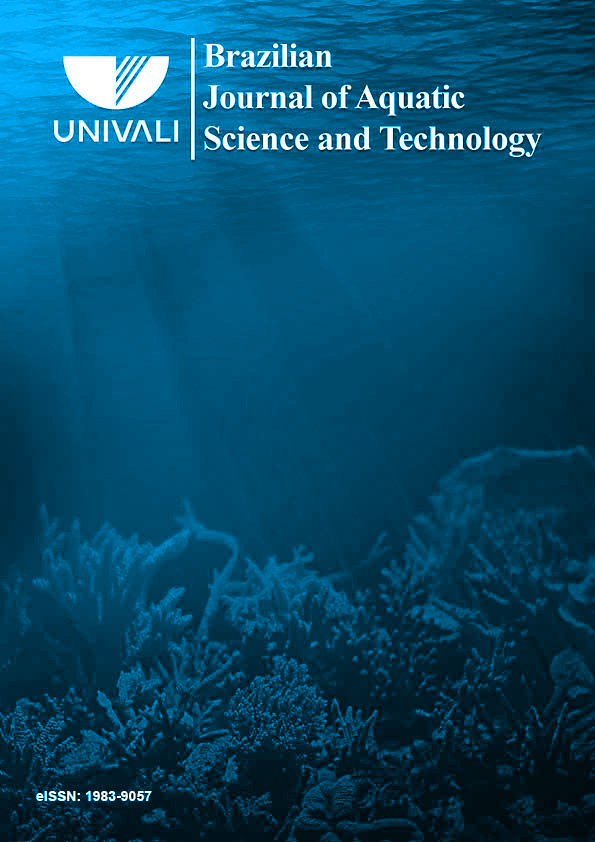FRUGIVORIA POR AVES EM Myrsine coriacea ((SW.) R.BR. EX ROEM. & SCHULT.) (PRIMULACEAE) E SEU USO POTENCIAL EM PROJETOS DE RESTAURAÇÃO
DOI:
https://doi.org/10.14210/bjast.v25n1.16682Resumo
Frugivory by birds Myrsine coriacea ((Sw.) R.Br. ex Roem. & Schult.) (Primulaceae) and their potential use in restoration projects Frugivory and seed dispersal studies are fundamental to comprehend the reproductive biology of plants. The aim of this work was to identify the species of birds that interact with M. coriacea, identifying its potentials dispersal vectors and assessing the use of this plant on ecological restoration programs. The observations were conducted on forest edges at Serra do Itajaí National Park, in two different moments with complementary methodologies. In the first period between June 2001 and 2002 it was adopted the hour-plant (tree-focal) as observation unit, with 15 plants selected for quantitative records, distributed throughout the day and totalizing 21 hours of observation. In the second period, from January 2013 to August 2015, it was adopted the feeding-bouts method on existing tracks. Considering both methods, 31 bird species were registered. Among them stand out in the focal method the species Turdus rufiventris (Vieillot, 1818), T. amaurochalinus (Cabanis, 1850) e T. abicollis (Vieillot, 1818), which in short visits ingested entire fruits, just as Tangara desmaresti (Vieillot, 1819) and Chiroxiphia caudata(Shaw & Nodder, 1793), forest species that promote the flow of seeds from more advanced stages of succession to areas under restoration. These aspects, associated with an abundant fructification and a fast shadowing, authorize their employment on ecological restoration projects.
Downloads
Publicado
Edição
Seção
Licença
Autores que publicam nesta revista concordam com os seguintes termos:
- Os Autores mantém os direitos autorais e concedem à revista o direito de primeira publicação, com o trabalho simultaneamente licenciado sob a Creative Commons Attribution License que permitindo o compartilhamento do trabalho com reconhecimento da autoria do trabalho e publicação inicial nesta revista.
- Autores têm autorização para assumir contratos adicionais separadamente, para distribuição não-exclusiva da versão do trabalho publicada nesta revista (ex.: publicar em repositório institucional ou como capítulo de livro), com reconhecimento de autoria e publicação inicial nesta revista.
- Autores têm permissão e são estimulados a publicar e distribuir seu trabalho online (ex.: em repositórios institucionais ou na sua página pessoal) a qualquer ponto antes ou durante o processo editorial, já que isso pode gerar alterações produtivas, bem como aumentar o impacto e a citação do trabalho publicado.

